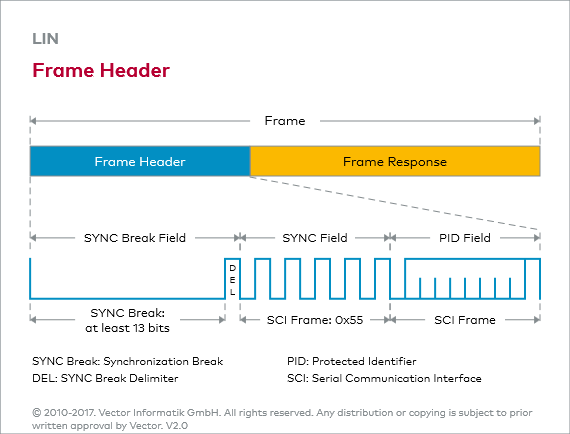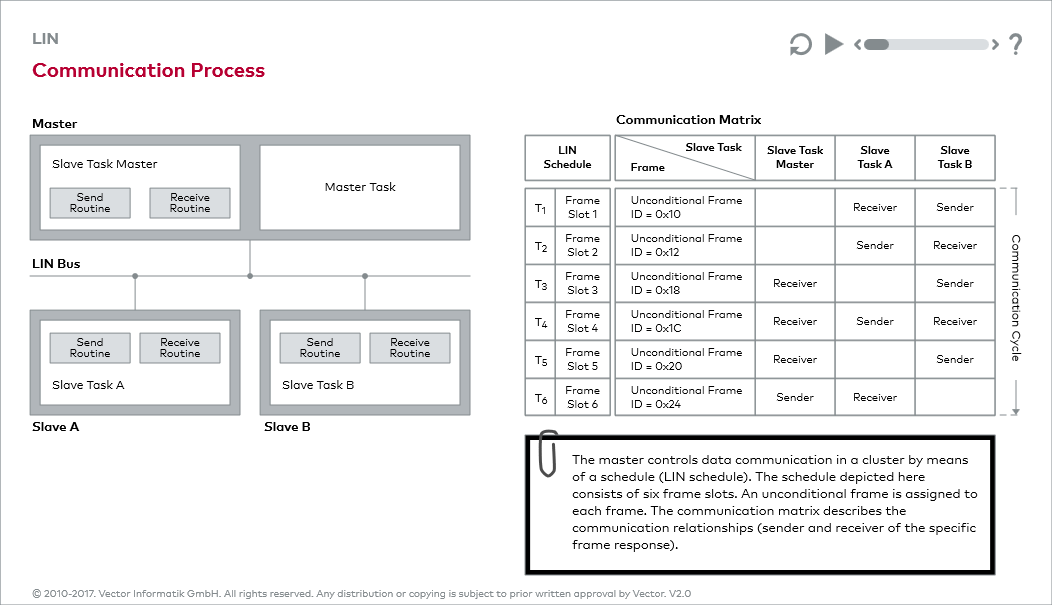Frame Header
Structure
All messages are initiated by the master. It does this by sending the header of a desired frame onto the bus. A frame header always consists of a Sync Break Field, the Sync Field and the PID Field (see figure: Frame Header).
Sync Break Field
and Sync Field
The Sync Break Field is a unique sequence of bits by which the slaves recognize the beginning of a header. The master then sends its cycle frequency with the Sync Field that follows; the slaves must synchronize to this. The two fields therefore serve to initiate the data transmission and to implement time synchronization to the master.
Identifier Field
After the Sync Field, the master transmits the identifier of the desired message. The identifiers reflect the communication relationships defined in the LDF. In addition, the response behaviors of the individual slaves are also defined. A slave can either behave passively, or it can send or receive a response. Since the identifier has an important meaning, it is protected with two parity bits P0 and P1. This combination of identifier and associated parity bits is the Protected Identifier (PID).


